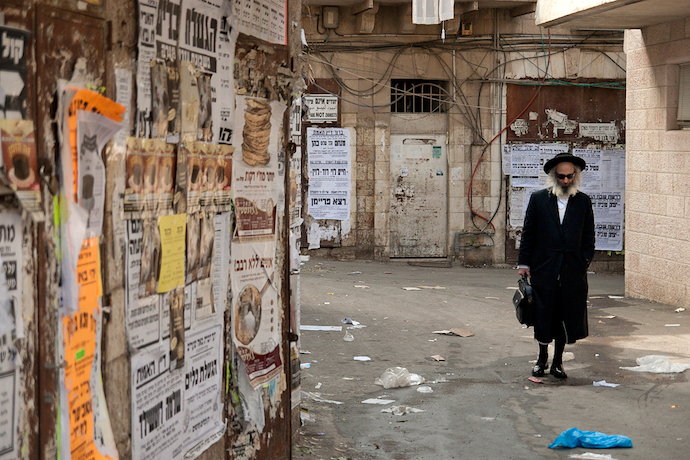
What Led to the Current Fighting Between Israel and the Palestinians and What Happens Next?
This week, television screens and social media were awash with images of hundreds of rockets being fired out of Gaza and into Israel. In response, Israel’s Iron Dome, its air-defense system was activated, intercepting and destroying most of them. Since then, both Hamas and Israel have stepped up their attacks on each other. By Friday evening, eight civilians had been killed in Israel, including two Palestinians and an Indian, and 126 people in Gaza, including women and children.
With much of the media’s focus on this recent round of violence, what is getting lost are the steps which has led to the current state of affairs. Absent this, the international community began the week indulging an orgy of handwringing and appeals for both sides to back down, de-escalate the crisis and call a ceasefire. By using this language, international observers are suggesting equivalence and that both Israel and the Palestinians are jointly responsible for the violence. Since then, the U.S. has weighed in on Israel’s side: President Joe Biden claims that Israel has shown no “significant overreaction” while government spokespeople have justified Israel’s actions as self-defence while evading whether Palestinians are entitled to the same.
In adopting this approach, the international community has shown a collective and willful amnesia to Israel’s recent provocations over the past month which has led to the present situation. Beginning in mid-April, Israeli authorities imposed new checkpoints at the entrance to Damascus Gate, the principal Palestinian entry point into Jerusalem’s Old City. That decision was offensive since it coincided with the start of the holy month of Ramadan, when thousands of Muslims pass through the doorway to reach the Al Aqsa to worship. The Israeli move led to widespread protests and the eventual dismantlement of the makeshift barricades.
Around the same time, Israeli police became more forceful against the weekly protests which take place in the nearby neighbourhood of Sheikh Jarrah. There, four Palestinian families numbering up to 70 people in all were due to be evicted from land claimed by Jewish associations who claimed that the land belonged to Jews before the formation of Israel in 1948 – and which have been upheld by Israel’s courts. The families are themselves refugees who were forced to leave their homes in what is now Israel and were resettled in Sheikh Jarrah after 1948, when the neighbourhood was under Jordanian jurisdiction.
The rising anger at Israeli heavy-handedness has only grown. Palestinian anger led to confrontations, including rock-throwing. But whereas such altercations usually have a ritualistic air, with the authorities making a show of force and the protestors eventually breaking up, the Israeli reaction was more violent this time around. The police moved forward and used excessive force on the Haram al-Sharif/Temple Mount, where Al Aqsa is situated. Using rubber bullets and stun grenades, the police injured more than 300 Palestinians and also invaded the mosque.

The Israeli authorities’ behaviour is not an aberration. It is symptomatic of a wider, uglier nationalist streak that has taken hold of Israeli Jewish society. As both opinion polls and the four general elections over the past two years have shown, Israel’s political mood has moved definitively to the right and become increasingly intolerant of the Palestinians. In 2018, the Knesset passed a law which identifies Israel as a Jewish nation-state, disregarding the identity and rights of other, non-Jewish people in the country. That chauvinism was on display towards the end of April, when far-right Israelis marched through the centre of Jerusalem, shouting “Death to the Arabs” and attacked and injured more than 100 Palestinians in the process.
Perhaps sensing the dangers presented by such antagonism and the risk that matters might spiral out of control, Israeli authorities have belatedly responded. Last Sunday, the Israeli Supreme Court decided to cancel a hearing on the Sheikh Jarrah evictions until a later date. Then on Monday, authorities sought to redirect a nationalist march to commemorate Flag Day through the Old City.
The moves turned out to be too little, too late. On Monday, Hamas, which controls Gaza, issued an ultimatum to Israel to stop its aggression in Jerusalem. When the deadline passed, it began launching more than 1,000 rockets into Israel. Israel’s security services were surprised at the show of force, since it was a far larger barrage than they have previously experienced. Those rockets which got through landed in central Israel, including in cities like Tel Aviv.
Both the Hamas fusillade and the Israeli response have been revealing. For Israelis, many of whom believed themselves safe from the threat of violence, had that security challenged. For the Palestinians, there has been growing unity on both sides of the Green Line, which divides Israel from the occupied territories of the West Bank and Gaza. Palestinians in Israel, who make up 20 percent of the population, demonstrated their solidarity with events in Jerusalem and Gaza by rioting in the central Israeli city of Lod. A state of emergency was called, but the unrest has now spread to other cities, including Ramle, Haifa, and Acre.
The prominence of both Hamas and the wider mobilisation affecting the Palestinian population exposes the absence of its leaders, most particularly Mahmoud Abbas and his Fatah party. At the end of April, Abbas canceled legislative elections which were due to take place on May 22. Although he justified his decision on the grounds that Israel would not allow Palestinian residents in Jerusalem to take part, both he and his faction within Fatah were not expected to do well. But whereas he has previously ridden out similar postponements and cancellations in the past, it is not clear that he will be successful this time. His latest move has led to substantial opprobrium being unleashed against him and calls for him to go.
Abbas’s diminished stature therefore means that the current crisis may not work to his advantage. By contrast, Israel’s Prime Minister Benjamin Netanyahu may see the escalating violence as a last gasp chance to avoid the corruption trials which threaten to engulf him. Last week he ran out of time to form a new government following the most recent election in March. President Reuven Rivlin handed the task over to the opposition, a motley collection of different political parties from the centre-left to the right, whose only common interest is to keep Netanyahu out.
At the same time, Netanyahu and the rest of the political class may have bitten off more than they can chew. Their hardline stance against the Palestinians has not only angered them, but emboldened their right-wing Jewish supporters to take matters into their own hands. Whereas previous actions against Gaza took place against a backdrop of relative quiet at home, the current round of fighting is taking place at a time when violence on both sides within Israel threatens to spiral out of control. The consequences of that may be far harder to deal with than the aftermath of the current military offensive in Gaza.

